TL;DR
Base is an Ethereum Layer-2 solution developed by cryptocurrency exchange Coinbase in partnership with Optimism. Its goal is to provide a safe, cost-effective and developer-friendly environment for creating on-chain applications.
Base is compatible with all EVM wallets and the Coinbase Wallet.
Base has diverse use cases, including payment applications, token swaps, liquidity provision, token bridging, and launching DAOs.
What is Base?
Base is an Ethereum Layer-2 (L2) blockchain officially launched on August 9, 2023 by Coinbase, a US-based cryptocurrency exchange. Base has attracted attention in the crypto community because it is the first blockchain launched by a publicly traded company.
Base was developed in partnership with Ethereum's L2 blockchain, Optimism, on the OP Stack, an open-source, standardized development toolset that powers Optimism. Base allows developers to create decentralized applications (DApps) with access to the Coinbase ecosystem with 110 million verified users and over $80 billion in assets.
Base's goal is to create a Superchain powered by Optimism and supported by a community of developers. Base has publicly announced that it does not currently plan to issue a new network token for Base, so users should be extremely cautious of scammers offering fake Base tokens.
What is Layer-2?
Layer-2 Blockchain is a term used to describe secondary protocols or structures built on top of an existing (Layer-1) blockchain network, such as Ethereum. The main objective of Layer-2 solutions is to improve the scalability, transaction processing rate, and efficiency of the underlying Layer-1 blockchain without compromising its security or decentralization.
There are several types of Layer-2 blockchain technologies, including state channels (Bitcoin's Lightning Network and Ethereum's Raiden Network), sidechains (Bitcoin's Liquid Network and Ethereum's Loom Network) and rollups (Optimistic rollups and ZK-rollups).
Some of the most widely used Layer-2 blockchain networks include Optimism, Polygon, zkSync, and Arbitrum.
What is Optimism?
Optimism is a Layer-2 blockchain solution built on the Ethereum network, with the aim of improving its scalability, transaction processing capacity and reducing associated fees. Optimism uses a technology called Optimistic Rollups, in which multiple off-chain transactions are aggregated into a single on-chain data representation and submitted to the main Ethereum blockchain.
Optimism uses a fraud-proof system, which assumes that all aggregated rollup transactions are initially valid. Users can dispute these transactions and submit possible evidence of fraud within a specific time frame. If any fraudulent activity is detected during this period, the malicious user will be penalized and the transaction will be reversed.
What are the use cases for Base?
Like other L2 networks, Base can be used for a wide variety of use cases. Let's look at some examples of applications developed at the Base.
1. Payment apps
Beam is a payment app that allows users to transact using the stablecoin USDC or the app's native token, Eco. Users can log in using their Twitter (X) account and pay Gas costs using USDC or Eco. Additionally , Beam includes an integrated gateway for converting between cryptocurrencies and fiat currencies.
2. Swaps de tokens
Swapping tokens on decentralized exchanges (DEXs) allows Base users to trade multiple cryptocurrencies. There are currently several decentralized brokers operating on Base, such as Uniswap, Maverick and Dackieswap.
3. Providing liquidity
Users can provide liquidity on the Base blockchain through various DApps such as Uniswap, BaseSwap, and Dackieswap. These DApps allow liquidity providers to earn fees for transactions in liquidity pools.
4. Bridging
Base has developed an official bridging service, known as Base Bridge, which is compatible with most Ethereum wallets such as MetaMask or Coinbase Wallet. Users can connect ERC-20 tokens between Base and Ethereum.
Bridging from Ethereum to Base usually takes a few minutes, while bridging from Base to Ethereum takes around 7 days.
5. Launch of DAOs
A Decentralized Autonomous Organization (DAO) is a blockchain-based organization characterized by decisions made by the community and which is managed through smart contracts. Aragon, a protocol for creating DAOs, introduced a no-code DApp on the Base Network, simplifying the DAO creation process.
Will a BASE token be created?
Base's roadmap and their official Twitter page (X) state that they have no plans to issue a network token.
However, some projects may initially claim that they have no plans for airdrops and later execute an unannounced airdrop. This is usually done to reward early backers for contributing to the network and promoting the community.
How to connect to Base Network and use its testnet?
Connecting to the Base Network is simple and can be done with Coinbase Wallet or any EVM-compatible wallet.
1. How to connect to Base with Coinbase Wallet
To use Base using the Coinbase Wallet, follow the steps below:
1. Launch the Coinbase Wallet browser extension and log into your account.
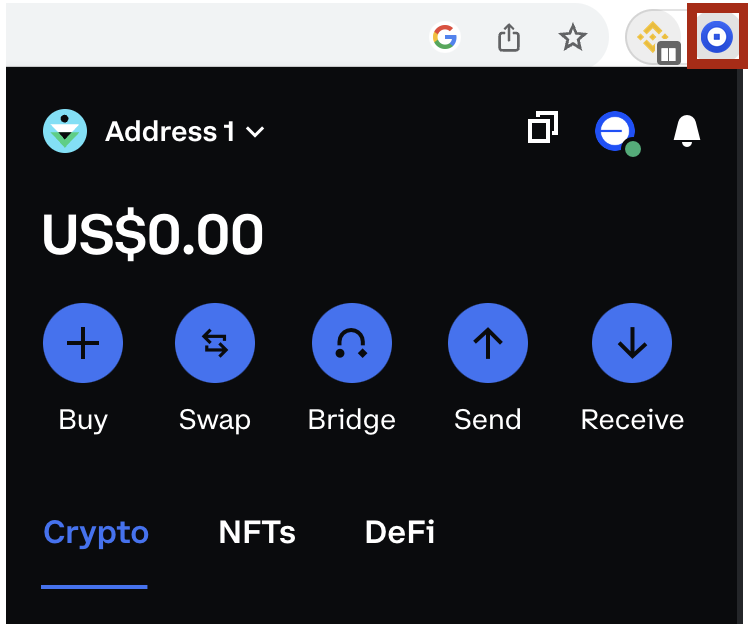
2. Connect to an app using Coinbase Wallet (in this example we will use BaseSwap).

3. Access the network selection menu by clicking on the network symbol in the upper right corner.
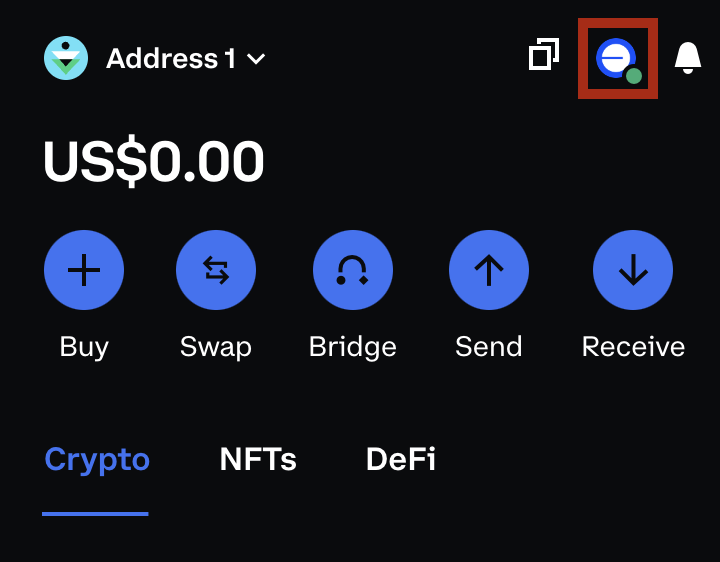
4. From the list, select Base.
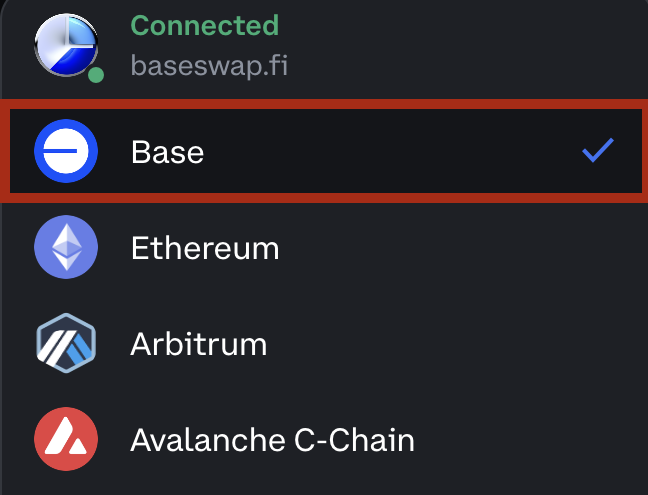
5. Now the Base Network will be set as the active network.
2. How to connect to Base with MetaMask
Users can connect to Base using multiple EVM wallets. Let's see an example of how to connect the Base network and the MetaMask wallet.
1. Launch the MetaMask browser extension.

2. Access the network selection drop-down menu by clicking the button located at the top of the extension.

3. Select "Add network".
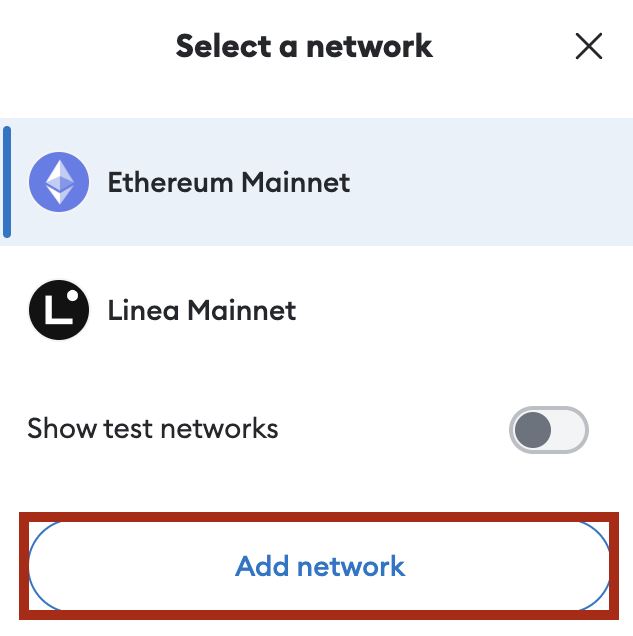
4. Select "Add a network manually".
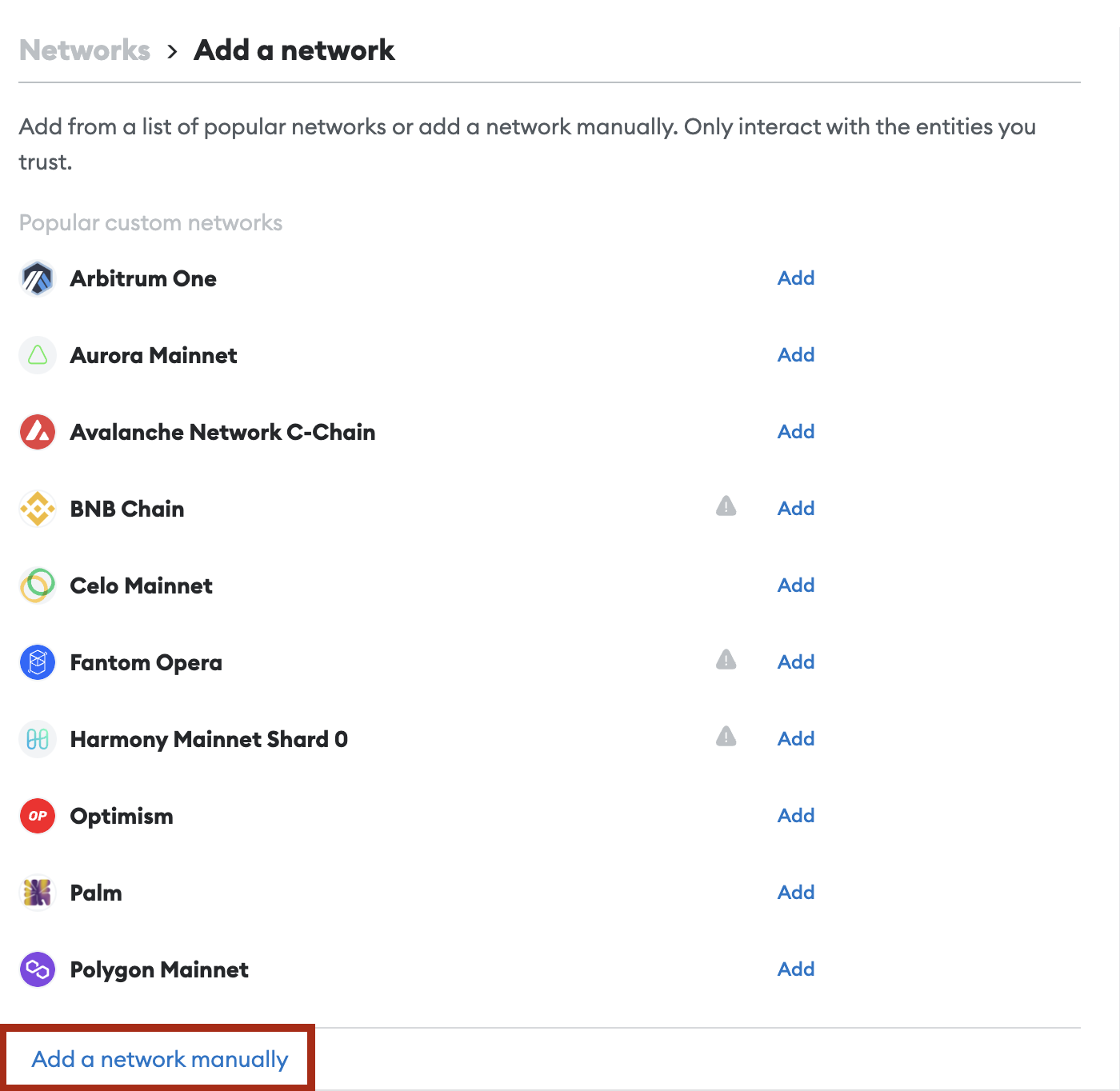
5. In the “Add a network manually” box, enter the following details for the Base testnet, Goerli, and click save:

6. You can now connect to the Base Network via the network selection menu.

What are the advantages of Base Network?
Key benefits of using Base Network include:
1. Low cost
Like other optimistic rollups, Base features low Gas fees designed to significantly reduce costs and improve transaction processing rates. It achieves this by processing transactions off-chain and consolidating them into a single proof.
2. Accessibility
EVM-compatible blockchains like Base improve accessibility by allowing developers to easily deploy and utilize existing Ethereum-based tools, frameworks, and smart contracts across multiple platforms.
3. Scalability
L2 scalability offers significant advantages by increasing the capacity and transaction throughput of blockchain networks. It is an improvement that solves bottlenecks and reduces inefficiencies, providing faster and more economical solutions for users and developers.
What are the disadvantages of Base Network?
The main limitations and concerns associated with the Base Network are as follows:
1. Centralization
One of the main concerns surrounding the Base is the degree of centralization. Coinbase serves as the sole sequencer node on Base, providing considerable control over transactions. A sequencer node is a specialized node in a blockchain network responsible for sequencing and finalizing transactions in a specific order, improving transaction processing capacity.
Having a sequencer node concentrates the processing power and ordering of transactions in a single entity. Additionally, this centralized authority has the ability to set and modify fees associated with the Coinbase Sequencer sequencer. Coinbase has hinted at the possibility of integrating third-party nodes in the future.
2. Long waiting periods for withdrawals
One of the main limitations of the Base blockchain is the long waiting periods for withdrawals, which take approximately 7 days. This delay is attributed to Optimism's fraud-proof system, which allows users to dispute transactions and submit potential evidence of fraud within this time frame.
Long withdrawal times can result in a poor experience for users.
3. Security
As it is an L2 built on the OP Stack, the Base faces a set of security risks. The first concern is related to the effectiveness of fraud-proof mechanisms as a security measure. Fraud proofing relies on the vigilance of network participants to monitor and dispute any invalid off-chain transactions before they are finalized on the main blockchain.
However, this mechanism faces several challenges, including problems with incentives and rewards for participants and vulnerability to data retention attacks.
Final considerations
The Base has generated a lot of interest since its launch. By September 7, 2023, the network surpassed the 1 million user mark and more than US$385 million in total locked value (TVL). This incredible achievement puts Base in 8th place in terms of TVL, surpassing popular blockchains like Cardano and Solana.
As the first blockchain launched by a publicly traded company, Base Network is opening up new possibilities to attract a wider audience and bring more users into the world of Web3. As the platform continues to grow and evolve, it remains essential that users and developers evaluate and make informed decisions when interacting with the Base Network.
Further reading
Risk Notice and Disclaimer: This content is presented to you “as is” for informational and educational purposes only, without warranty of any kind. The content should not be construed as financial, legal or professional advice, and is not intended to recommend the purchase of any specific product or service. You should seek your own advice from professional advisors. In the case of contributions and articles submitted by third-party contributors, please note that the opinions expressed are those of the respective author and do not necessarily reflect the opinions of Binance Academy. For more details, please read our disclaimer here. Digital asset prices can be volatile. The value of your investment may increase or decrease and you may not get back the amount invested. You are solely responsible for your investment decisions and Binance Academy is not responsible for any of your possible losses. This material should not be construed as financial, legal or professional advice. For more information, please see our Terms of Use and Risk Notice.